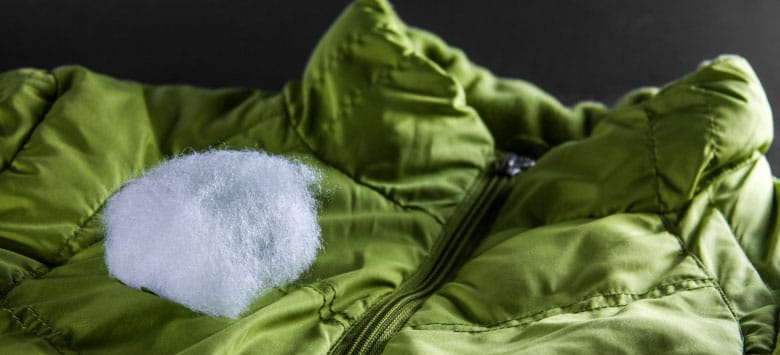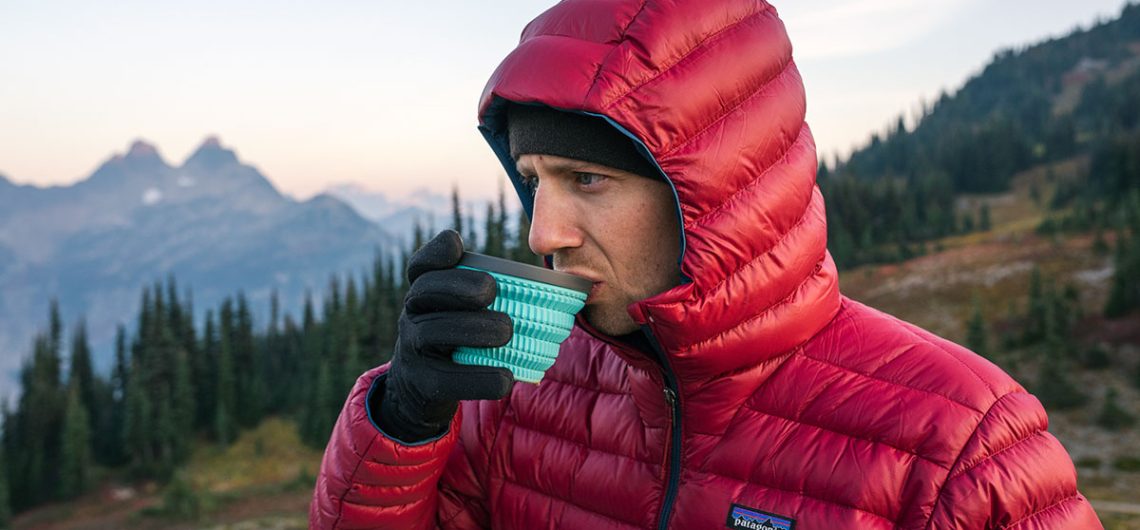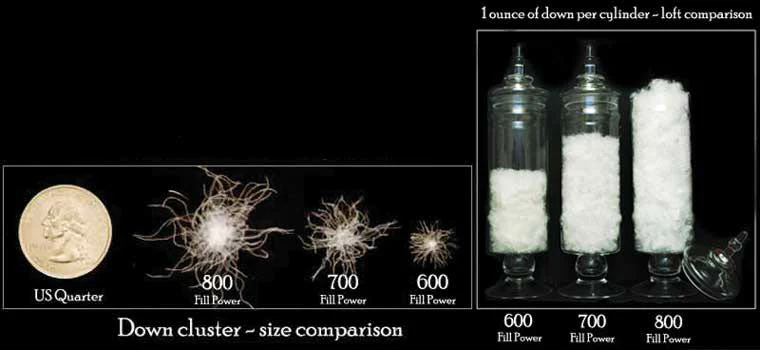A down jacket is among the most essential equipment you’ll need for your Kilimanjaro climb. You should dress in layers so that you can survive the freezing temperatures. This post will explain where and what to look for if you want to choose a down jacket, puffer jacket, or insulated jacket that is appropriate for the mountain.
Renting one from us is the simplest method to completely avoid the issue. But first, let’s look at what to look for in a jacket if you truly want to have one. Choosing between one made of down or one made of a synthetic substance should be your initial choice.
The great thing about Down is how well it insulates for its lightweight.
Tiny threads that are part of each cluster allow air to rise between them. These pockets allow the material to breathe while absorbing air, allowing it to warm up.
Another advantage of down is that it may be compressed extremely tiny while still protecting against harm. This is why Down is regarded as the finest insulator in existence. Down coats provide cozy warmth without adding bulk.
A down jacket becomes an essential piece of equipment while starting a Kilimanjaro climb since it will help you stay warm in the bitter cold. Whether it’s a puffer jacket or an insulated jacket, this article is your entire guide to picking the best down jacket to keep you warm and comfortable on the mountain.
When buying a down-insulated item, three factors should be taken into account: fill power, fill weight, and down-to-feather ratio. All three of Down’s properties are covered below.
Here are the top 5 recommended down jackets for climbing Kilimanjaro
To Rent or to Own
A convenient way to sidestep the jacket selection process is by renting one from us directly. However, you can purchase a good down jacket from the store or online if owning your own jacket is your preference, let’s explore the factors to consider when choosing a suitable jacket. The first decision to make is whether you want a jacket filled with natural down or a synthetic material. Read about gear rental for Mount Kilimanjaro here.
The Marvel of Down Insulation
Down insulation is revered for its impressive warmth-to-weight ratio. Comprising tiny fibers that create pockets of air between clusters, down’s ability to trap air translates to exceptional insulation. As these pockets trap air, they allow it to heat up while simultaneously enabling the material to breathe.
Another advantage of down insulation is its compressibility without losing integrity. This unique property makes down insulation a favorite among outdoor enthusiasts. Its warmth-to-weight ratio is why down is widely regarded as one of the most efficient insulators known.
Understanding Fill Power and Fill Weight
Two critical aspects when evaluating down jackets are fill power and fill weight.
Fill Power: This measurement gauges the loftiness of down. A higher fill power means more trapped air and thus better insulation. Fill power quantifies the amount of space one ounce of down occupies in cubic inches. For example, 800 fill power occupies 800 cubic inches with one ounce of down. Opt for jackets with a fill power of at least 600 for general use, but for Kilimanjaro’s sub-zero temperatures, aim for 700 or higher.
Fill Weight: Fill weight reflects the amount of down in the jacket. A higher fill weight typically results in a heavier jacket with better insulation. While fill power indicates loft, fill weight ensures there’s enough insulation to maintain warmth. Manufacturers often display fill power but overlook fill weight, so a balanced approach is crucial.
 The Importance of Down-to-Feather Ratio
The Importance of Down-to-Feather Ratio
The down-to-feather ratio in a jacket directly impacts its warmth. With down being warmer than feathers, a higher down-to-feather ratio correlates to better insulation. Ratios like 70/30, 80/20, or 90/10 represent the proportion of down to feathers. Opt for jackets with at least 80/20 down-to-feather ratio for optimal warmth.
The Rise of Synthetic Alternatives
Synthetic jackets provide an alternative to down, offering advantages like moisture resistance and affordability. Although synthetic insulation was traditionally heavier and less warm than down, advancements in technology have narrowed the performance gap. Synthetics maintain warmth even when wet, making them suitable for damp conditions. They’re also budget-friendly and less bulky.
Making Sense of Puffiness and Warmth
A common misconception is that puffiness directly correlates with warmth. While puffiness is a factor, thin jackets aren’t sufficient for challenging conditions like Kilimanjaro. Instead, consider manufacturers that provide temperature ratings, indicating the lowest temperature at which the jacket offers comfort while at rest.
Be Ready for Unpredictable Conditions
Mount Kilimanjaro’s varying conditions necessitate preparation for worst-case scenarios. Opting for slightly bulkier insulation is prudent, ensuring your jacket can handle unexpected temperature drops. Focus on maintaining warmth and comfort by combining adequate insulation with strategic layering.
After your climb, ensure your down jacket’s longevity by avoiding long-term compression. Store it hanging or laid flat to preserve its loftiness. While compression during travel is acceptable, restoring the jacket’s shape upon return is essential.
Staying Warm on Kilimanjaro
At high elevations, Kilimanjaro’s temperatures can plummet. A down jacket is a crucial mid-layer for frigid conditions. It’s worn during camp evenings, night-time summit attempts, or brief trail breaks. When packing for Kilimanjaro, remember:
- Insulated Jacket: Choose between synthetic or down insulation, ensuring it’s appropriately warm.
To battle extreme cold, down is unparalleled. Clusters of fine feathers trap air pockets, which in turn trap body warmth. This ingenious design provides exceptional insulation.
In conclusion, selecting the right down jacket for Kilimanjaro requires evaluating factors like fill power, fill weight, and down-to-feather ratio. The jacket’s warmth is a result of these combined elements, ensuring your comfort on the challenging ascent.
Synthetic Insulation

When it comes to staying warm in cold conditions, both natural down and synthetic down offer their own set of benefits and drawbacks. Synthetic down, a technology-driven alternative to traditional down insulation has gained popularity for its unique characteristics. Let’s delve into the world of synthetic down, exploring its advantages and factors to consider.
Mimicking the Benefits: Technology Behind Synthetic Down
Synthetic down, as the name suggests, emulates the warmth-trapping properties of natural down by capturing air within pockets. Notable branded examples of synthetic insulation include PrimaLoft, Coreloft, Polartec Alpha, Turbodown, Thermoball, Thermal Q Elite, and PlumaFill. Each brand boasts its own proprietary technology, all claiming to provide the ultimate artificial down experience.
Balancing Bulk and Warmth
Compared to natural down, synthetic down typically comes with a trade-off between bulkiness and warmth. The polyester fibers in synthetic insulation have a lower warmth-to-weight ratio, meaning that a slightly heavier amount of synthetic down is needed to achieve the same level of warmth as natural down. Consequently, this bulkiness affects the compressibility of synthetic jackets, making them less packable than their natural down counterparts.
The Moisture Advantage
One of the standout advantages of synthetic down is its superior resistance to moisture. If a synthetic down jacket becomes wet, it dries relatively quickly and retains its loft, maintaining warmth even when damp. In contrast, real down loses its loft when wet and takes significantly longer to dry, making synthetic down a more reliable choice for wet conditions.
Budget-Friendly Option
From a financial perspective, synthetic down has a clear edge. Manufacturing synthetic insulation is generally less expensive than sourcing and processing natural goose down. This cost difference is often reflected in the price tag of synthetic down jackets, making them a more budget-friendly choice for those seeking quality insulation without breaking the bank.
Gauging Warmth and Temperature Ratings
Unlike natural down, which can be gauged using parameters like fill power and fill weight, synthetic down lacks standardized measures of warmth. This absence makes it more challenging to predict the warmth of a synthetic down jacket accurately. Most manufacturers do not disclose specific temperature ratings for their synthetic jackets, emphasizing the importance of personal experience and careful consideration.
Choosing the Right Jacket
When selecting a down jacket, especially for outdoor adventures like tackling Kilimanjaro, several factors come into play:
- Fill Power: Opt for a jacket with a fill power of 650 or higher. The fill power directly correlates to insulation efficiency, with higher numbers indicating greater warmth. Ideally, aim for 800 fill power for optimal insulation.
- Fill Weight: Consider a fill weight of 200-300 grams, which pertains to the down’s weight only, not the entire jacket’s weight. Keep in mind that extremely lightweight “sweater” or “ultralight” jackets might not suffice for challenging conditions.
- Hood Inclusion: A hooded jacket significantly enhances warmth by providing head protection from wind. Look for jackets with attached, insulated hoods for added comfort.
- Pockets: Hand pockets, a chest pocket, and inside pockets offer practicality for carrying essentials like gloves, phones, snacks, and more.
- Portability: Prioritize jackets that can be conveniently stuffed and packed into their own zippered pocket. This feature enhances convenience during travel.
- Layering Compatibility: Ensure that your chosen jacket is roomy enough to fit over other layers, including a hard shell. This arrangement facilitates efficient layering for varying conditions.
Preparing for Variable Conditions
Individual cold tolerance varies, making it important to consider others’ experiences as well as your own when choosing a down jacket. Additionally, the unpredictable nature of mountain conditions underscores the need for preparedness. While a specific jacket might suffice in milder temperatures, it could fall short during unexpected blizzards.
Embracing Warmth and Preparedness
Ultimately, the selection of a down jacket boils down to prioritizing warmth and preparedness. Opting for slightly bulkier synthetic insulation or a higher-fill-power natural down jacket can provide peace of mind in harsh conditions. Given the supported nature of climbs like Kilimanjaro, the minor additional weight of a warmer jacket shouldn’t be a significant concern.
When considering a jacket’s warmth, envision the most extreme scenario you might encounter and assess whether the jacket can keep you comfortable in those conditions. Adequate insulation, coupled with layering strategies, ensures a comfortable and enjoyable experience even in challenging environments.
Proper Storage for Longevity
To prolong the lifespan of your insulated jacket, avoid long-term compression. Instead of leaving it compressed for extended periods, hang the jacket or lay it flat to maintain its loft. While compressing during travel is acceptable, remember to restore the jacket’s shape and loft when you return to ensure its effectiveness over time.
In conclusion, synthetic down offers unique advantages like moisture resistance and affordability, while posing challenges related to bulkiness and predictability of warmth. Balancing these factors with your intended use and preferences will help you make an informed decision when choosing a down jacket for your outdoor adventures.
What are down jackets made of?
Certainly, down insulation is derived from the feathers of birds, typically ducks and geese. These soft and fluffy feathers are integral to keeping the birds warm, especially in colder environments. The quality of down insulation is often determined by factors such as loft, which refers to the fluffiness of the feathers, and the maturity of the bird from which the down is sourced.
As birds mature, their down becomes loftier, meaning it has more air-trapping capacity, and thus provides better insulation. This loft is what enables down to create pockets of warmth and retain body heat effectively. Consequently, down jackets filled with high-quality down offer excellent warmth-to-weight ratios, making them popular choices for cold-weather activities like climbing mountains.
Ducks and geese are commonly raised for their meat, and their down is a byproduct of this process. Ethical and sustainable practices in the sourcing of down are important considerations for many outdoor gear manufacturers, as well as for environmentally conscious consumers. Responsible sourcing ensures that the birds are treated humanely and that the down is harvested without causing harm to the animals.
Overall, down insulation from mature birds, such as ducks and geese, is prized for its exceptional insulating properties, making it a sought-after choice for creating warm and lightweight jackets ideal for high-altitude expeditions like climbing Kilimanjaro.
Pros and Cons of Down jackets vs Synthetic jackets
Pros and Cons of Down Jackets vs. Synthetic Jackets
When it comes to staying warm and comfortable in cold weather, choosing the right type of jacket is crucial. Two popular options that people often consider are down jackets and synthetic jackets. Each has its own set of advantages and disadvantages, and understanding them can help you make an informed decision for your winter wardrobe. In this article, we’ll dive into the pros and cons of both down jackets and synthetic jackets, highlighting their features, benefits, and drawbacks.
Down Jackets Pros: Embracing Natural Insulation
Warmer Than Down
Down jackets are renowned for their exceptional warmth. The natural insulating properties of down feathers make these jackets highly efficient at trapping heat, providing a level of warmth that synthetic materials often struggle to match.
Lighter Than Down
Despite their excellent warmth, down jackets are surprisingly lightweight. This makes them a favorite among outdoor enthusiasts who require insulation without the burden of a heavy jacket.
More Compressible
Down jackets can be compressed with ease, making them convenient for packing and travel. Their ability to regain loft after compression ensures that you can have a warm jacket, no matter how tightly it’s packed.
Down Jackets Cons
More Expensive
One of the downsides of down jackets is their cost. Due to the premium quality and insulation they offer, down jackets tend to be more expensive than their synthetic counterparts.
Not Warm When Wet
One significant drawback of down jackets is that they lose their insulation properties when exposed to moisture. Wet conditions can cause the down feathers to clump together, leaving you with a cold and less effective jacket.
Less Breathable
Down jackets can sometimes lack breathability, leading to overheating during high-intensity activities. While they excel in cold and dry conditions, they may not be the best choice for strenuous activities.
Slow to Dry
If a down jacket becomes wet, it can take a considerable amount of time to dry completely. This can be a challenge if you’re in a damp environment or if you need to reuse the jacket soon after getting it wet.
Synthetic Jackets Pros: Engineered for Performance
More Affordable
Synthetic jackets are often more budget-friendly than down jackets. They provide a cost-effective way to stay warm in cold weather without breaking the bank.
Still Warm When Wet
Unlike down jackets, synthetic jackets retain their insulation properties even when wet. This makes them a reliable choice for activities in wet and rainy conditions.
More Breathable
Synthetic jackets are designed to be more breathable, making them suitable for active pursuits. They allow for better airflow, reducing the risk of overheating.
Dries Quicker
Thanks to their synthetic nature, these jackets dry relatively quickly. This is advantageous if you find yourself in wet environments frequently.
Synthetic Jackets Cons
Not as Warm as Down
While synthetic jackets offer good insulation, they generally can’t match the exceptional warmth of down jackets. They might not be the best option for extremely cold climates.
Heavier Than Down
Synthetic jackets tend to be slightly heavier than down jackets with similar insulation levels. This might be a factor to consider if you prioritize lightweight gear.
Bulkier
Due to the synthetic materials used, these jackets can be bulkier than down jackets. This might affect your range of motion and comfort in certain activities.
![]()


 The Importance of Down-to-Feather Ratio
The Importance of Down-to-Feather Ratio
Comments